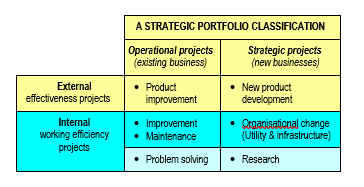Commentary on cases where project managers
also represent multiple internal users,
and some proposed procedural guidelines
FEATURED PAPER
By Alan Stretton, PhD (Hon)
Sydney, Australia
INTRODUCTION
In the last issue of this journal, I signalled an intention to look in more detail at organisational working efficiency projects which commonly have multiple users, whose collective interests are handled by user representatives (Stretton 2024c).
There can be many types of user representatives, who may include the following.
- permanent appointees (such as some Business Change Managers);
- formally appointed temporary representatives to cover individual projects;
- existing department or unit heads;
- emergent informal representatives;
- the delivering project manager.
This article is concerned with how some of these user representatives can go about effectively representing the interests and needs of the many users they typically represent in operational working efficiency projects. There is little discussion on this topic in the project management literature, although accurate and insightful user representation is obviously critical to the success of working efficiency projects.
I therefore propose to draw heavily on my own experience as a project manager delivering operational working efficiency projects, in which I also acted as the representative of the interests of the multiple users of these working efficiency initiatives – a dual role which I have abbreviated to PM+UR (Project Manager plus User Representative). My focus will tend to be on how I went about the latter part of this dual role, in addition to developing and executing the relevant project(s). I will also offer some procedural guidelines on this dual role, based largely on this experience.
I suspect that the dual PM+UR role might be more widely used in practice than is generally acknowledged. It was certainly by far the most common approach adopted in Civil & Civic for operational improvement projects. I suspect this may also apply in many other project-based organisations which rather naturally do most such undertakings by project, and typically give their project managers wider ranges of responsibilities.
We first look at some types of internal working efficiency projects in a broader context.
TYPES OF INTERNAL ORGANISATIONAL WORKING EFFICIENCY PROJECTS
Internal working efficiency projects within a broader project portfolio context
Shenhar & Dvir 2004, Table 50.2, proposed a strategic portfolio classification as broadly indicated in Figure 1 below, which I have modified slightly, as will be briefly discussed. As can be seen, this is essentially a classification of possible projects that could be components of an organisation’s strategic portfolio.

Figure 1: A strategic portfolio classification, adapted from Shenhar & Dvir 2004, Table 50.2
Identifying three types of internal working efficiency projects
First, I have augmented Shenar & Dvir’s bare External and Internal descriptors on the left, to clearly indicate the location of the working efficiency projects to be discussed in this article.
Second, I am uncomfortable with having problem solving as a separate type of internal working efficiency project. This appears to me to apply to all types of projects, and would be part and parcel of both operations improvement and maintenance projects. I have therefore elected not to discuss problem solving as a separate type of project.
Third, I have changed Shenhar & Dvir’s utility and infrastructure to organisational change projects, which I believe are reasonably synonymous in this context. I will be discussing the latter particularly in the context of transformational organisational change, which OGC 2007:249 describes as “a distinct change to the way an organisation conducts all or part of its business”.
Finally, I will not be discussing research in this article, because it seems to me that this is too extensive a topic to be restricted to the working efficiency domain.
More…
To read entire paper, click here
How to cite this work: Stretton, A. (2024). Organisational working efficiency projects: Commentary on cases where project managers also represent multiple internal users, and some proposed procedural guidelines, PM World Journal, Vol. XIII, Issue IV, April. Available online at https://pmworldlibrary.net/wp-content/uploads/2024/04/pmwj140-Apr2024-Stretton-Organisational-working-efficiency-projects.pdf
About the Author

Alan Stretton, PhD
Life Fellow, AIPM (Australia)
Sydney, Australia
![]()
Alan Stretton is one of the pioneers of modern project management. In 2006 he retired from a position as Adjunct Professor of Project Management in the Faculty of Design, Architecture and Building at the University of Technology, Sydney (UTS), Australia, which he joined in 1988 to develop and deliver a Master of Project Management program. Prior to joining UTS, Mr. Stretton worked in the building and construction industries in Australia, New Zealand and the USA for some 38 years, which included the project management of construction, R&D, introduction of information and control systems, internal management education programs and organizational change projects. Alan has degrees in Civil Engineering (BE, Tasmania) and Mathematics (MA, Oxford), and an honorary PhD in strategy, programme and project management (ESC, Lille, France). Alan was Chairman of the Standards (PMBOK) Committee of the Project Management Institute (PMI®) from late 1989 to early 1992. He held a similar position with the Australian Institute of Project Management (AIPM), and was elected a Life Fellow of AIPM in 1996. He was a member of the Core Working Group in the development of the Australian National Competency Standards for Project Management. He has published 250+ professional articles and papers. Alan can be contacted at alanailene@bigpond.com.au.
To see more works by Alan Stretton, visit his author showcase in the PM World Library at http://pmworldlibrary.net/authors/alan-stretton/.









